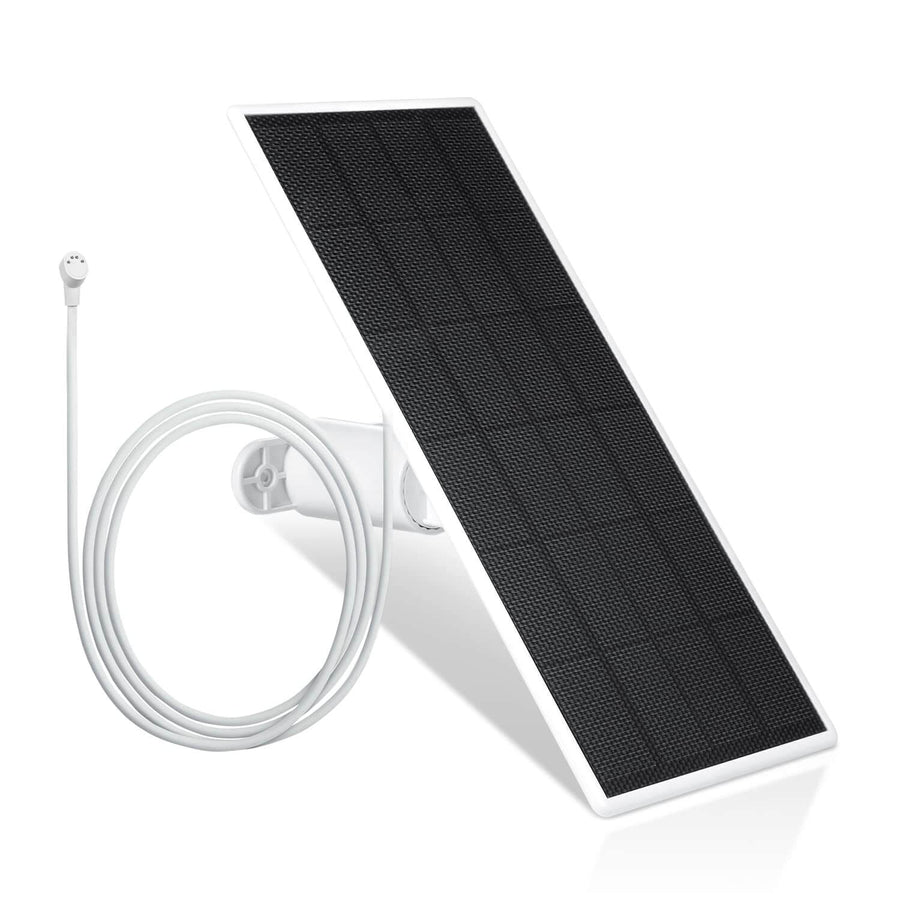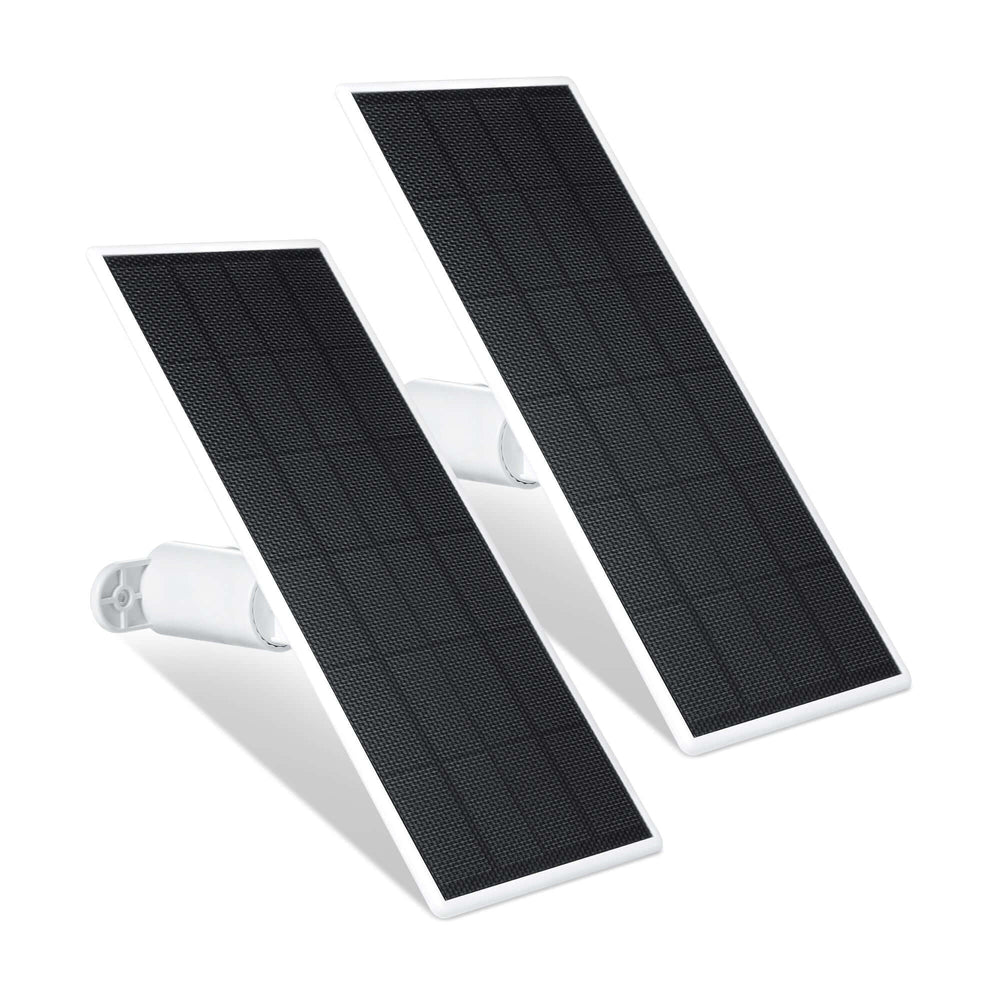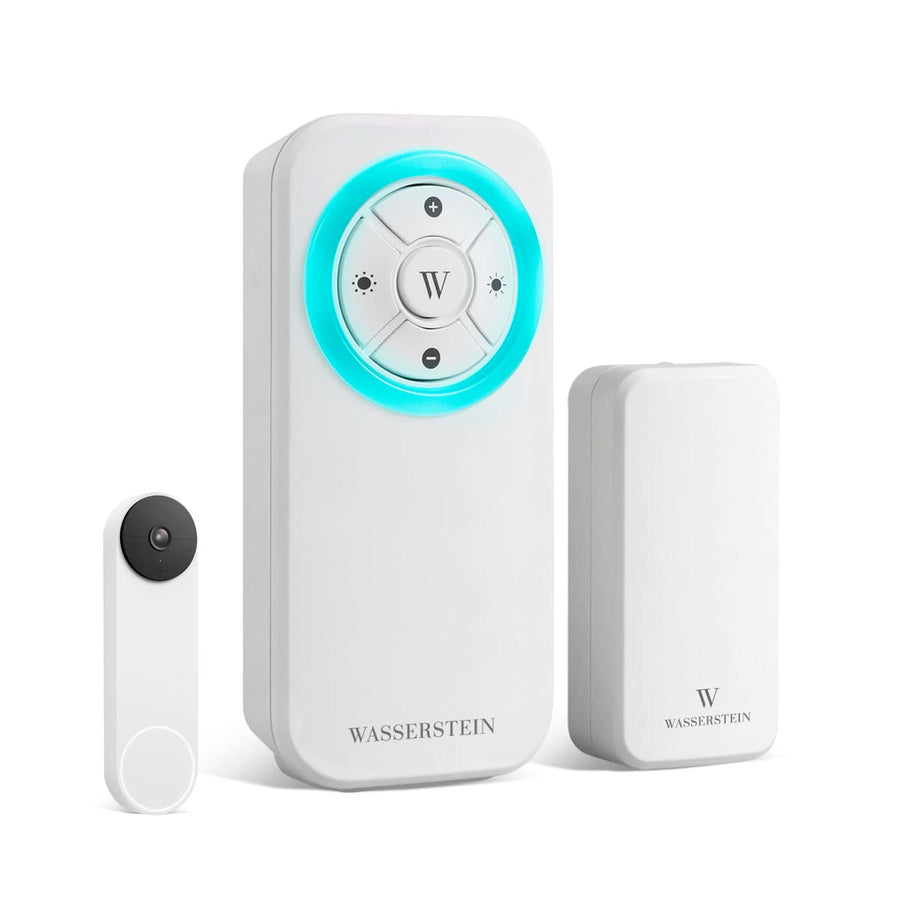How to Tell If a Security Camera Is Recording You: Signs & Expert Tips
Quick Summary
- 🔴 Check LED lights: Blinking or solid red, green, or blue lights often signal recording.
- 🎥 Look for camera movement: PTZ cameras that pan or tilt are likely recording.
- 📱 Use your phone: Detect infrared night vision lights or scan Wi-Fi networks for active cameras.
- 🎤 Check for microphones: Small holes or speaker grills may indicate audio recording.
- 💾 Review footage or settings: Access DVR/NVR or app to confirm recent recordings.
- ⚠️ Know the law: Audio and hidden surveillance have legal restrictions in private spaces.

Whether you’re safeguarding your property, checking into a hotel room, or walking through a store, it’s natural to wonder, is that security camera recording me right now? Understanding the signs that a security camera is actively recording, and whether it's capturing audio as well, is crucial for both protecting your privacy and ensuring your surveillance system is functioning correctly.
In this blog, we’ll explore expert-approved ways to tell if a security camera is recording video or audio, the legal implications, and tools you can use to detect hidden or unauthorized recording devices.
🛒 Looking for reliable smart cameras and accessories? Explore our collection of smart cameras here.
Understanding Security Camera Recording Indicators
Many security cameras come with a variety of indicators that reveal whether they’re capturing video or audio. Looking for specific indicators, such as blinking lights or camera movement, is a straightforward way to tell if a security camera is recording. These clues can be physical—like lights or camera movement—or digital, such as recording icons or active network traffic. Learning how to interpret these signs is the first step in verifying if a camera is truly protecting your space.
Why It’s Important to Know If a Security Camera Is Recording
Whether you’re a homeowner, renter, or just someone concerned about personal privacy, knowing if a camera is actively recording can give you peace of mind or a reason to act. Cameras that appear to be on may not be saving footage, and others may be secretly recording you without your knowledge.
Knowing whether a security camera system is capturing footage is vital for multiple reasons:
- Ensuring Safety: If a camera is part of your security system, you need assurance that it’s actively recording and protecting your property.
- Preserving Privacy: In private settings like hotel rooms, Airbnbs, or bathrooms, illegal recordings are a serious invasion of personal space.
- Saving Storage Space: Most security cameras, especially motion-activated ones, record only when necessary to optimize storage capacity and save storage space. Using features like scheduled recording or lower resolution settings can further help save storage space by reducing the amount of footage stored.
🔗 Curious if your Ring camera records 24/7? Here’s the truth about Ring’s recording.
Types of Security Camera Recording Modes

Not all cameras record the same way. Understanding the different recording types helps you better interpret the camera’s behavior and know what to expect in terms of storage, footage review, and real-time alerts. These modes determine when the camera will capture video, which can impact both storage needs and how footage is reviewed. Here’s a breakdown of the most common modes found in today’s surveillance systems:
- Motion-Activated Recording: Cameras with motion sensors only record when activity is detected. It saves storage space and power but may miss brief or subtle events.
- Continuous Recording: Often used in business settings or high-security areas, this mode records 24/7 and requires substantial storage capacity.
- Scheduled Recording: Some systems allow users to define specific hours or days when the camera should be actively recording.
- Triggered Recording: Some cameras use sensors or alarms to trigger recording automatically when a threshold is met.
Visual Signs That a Security Camera Is Recording
Let’s go over a few physical signs that can help you determine whether a camera is actively recording or simply installed as a deterrent. In addition to using technology, conducting a thorough physical inspection is an important method for detecting if a camera is recording.
Blinking or Solid LED Light Indicators

Most security cameras include LED lights to indicate status. These “status LEDs” often use different colors:
- Red Light: May indicate standby or night vision mode. A blinking red light often means the camera is recording audio and video, which is the case with older CCTV cameras.
- Green Light: Often signifies a live feed or power-on state.
- Blue Light: Typically seen on Ring or Blink cameras when live viewing is in progress or the device is actively recording.
For example, Ring’s blue light signals when someone is watching the live feed, and it may spin during two-way talk.
🔗 Learn more about the blue light on Ring cameras.
Some camera models allow users to disable the LED light, making it difficult to visually confirm recording, especially in stealth setups
Moving or Panning Motion (For PTZ Cameras)
Pan-Tilt-Zoom (PTZ) cameras typically move in response to motion detection or on a scheduled patrol. If you see a camera rotating or hear mechanical whirring, it's a strong indication that the camera is actively recording and tracking activity.
IR Night Vision Glow

In low-light settings, some cameras emit a faint red glow from their infrared (IR) LEDs. This is part of their night vision feature. You might not see it with the naked eye, but using a smartphone camera (which can detect IR light) can reveal these glows, confirming that the camera is capable of video surveillance in the dark.
Live Feed on Monitors
In businesses or public places, monitors may display a live camera feed. However, this doesn’t guarantee that footage is being saved, and it could just be a real-time view. To confirm active recording, look for recording icons, timestamps, or DVR/NVR integration behind the scenes. Additionally, reviewing recorded footage on the storage device is a reliable way to confirm if the camera is actually saving video.
Audio Recording Indicators
Audio surveillance can be harder to detect, but there are a few visual and physical signs that a security camera records audio:
- Microphone Hole: A tiny hole near the lens (not labeled “reset”) often signals the camera's microphone, which is used to capture audio.
- Speaker Grills: Multiple small holes on the back or underside of the device may indicate two-way audio capabilities.
- External Microphones: Wired add-ons, often dome- or stick-shaped, can signal audio capability in more traditional CCTV setups, though some cameras have built-in microphones as an alternative.
- Check Model Info: Search the camera’s serial number to confirm if it supports audio features and whether it can record audio.
Most IP security cameras have audio recording capabilities, while older CCTV models typically do not. Audio can also be disabled via the camera app, making it harder to confirm whether a conversation is being recorded unless you’re monitoring it directly. Audio data is stored along with video files, and recording audio may increase storage requirements depending on the quality and length of the captured sound.
Checking Digital Signs
Not all signs of surveillance or recording status are visible. Many cameras, especially wireless or IP models, transmit data through networks, which can be detected using the right tools. These digital indicators can help you verify whether a camera is transmitting or storing footage without needing physical access to the device. Another way to check if footage is being stored is to inspect the recording device, such as a DVR or NVR, for status lights, storage activity, or interface notifications.
Wi-Fi Signal Detection
Security cameras that rely on a wireless connection often appear on your network. By scanning your home or office Wi-Fi using network monitoring tools like Fing or Wireshark, you can identify unknown devices or discover if an existing camera is streaming video or audio in real-time.
RF Signal Scanners & Hidden Camera Detectors
Wireless surveillance devices emit radio frequencies (RF). With an RF scanner, you can scan a room to detect hidden or unauthorized cameras. This is especially useful in places like hotel rooms or rental properties, where visual inspection isn’t enough. Always shut off other RF-emitting devices to minimize interference.
Accessing Camera Feeds on a Shared Network
If you have access to the same network as a suspected camera, you can use basic IT tools to detect its presence. Tools like Angry IP Scanner or your router’s admin dashboard allow you to view active IP addresses and even identify streaming endpoints associated with a security system.
Security DVR/NVR Check
For wired security systems, the footage is usually stored on a DVR (Digital Video Recorder) or NVR (Network Video Recorder). Checking these devices directly lets you confirm whether any cameras are actively recording, what their recording schedule is, and if storage space is available. Keep in mind that including audio in recordings can significantly increase file size, which impacts storage requirements.
Hidden & Unauthorized Security Camera Recording: What You Need to Know
While most security cameras are installed for safety and monitoring, not all surveillance is transparent—or legal. Some setups can record discreetly, and others may be exploited by hackers. It can be difficult to tell if a camera is recording, especially when it is hidden or unauthorized. Understanding how unauthorized or covert recording works can help you better protect your privacy.
Security Cameras Can Record Without LED Lights
Just because you don’t see a light doesn’t mean the camera isn’t recording. Many devices let users disable LED status indicators, allowing for discreet monitoring. This setting can be helpful for homeowners, but raises concerns when used inappropriately or without consent.
Hacked Cameras Can Record Without the Owner Knowing
Weak passwords and outdated firmware can leave security cameras vulnerable to cyberattacks. Once hacked, these cameras can silently stream or store footage without the owner’s knowledge, making it critical to follow cybersecurity best practices.
Security Camera Footage Can Be Accessed Without Your Permission

Many modern cameras store footage in the cloud. If your account is compromised, either through phishing or poor password hygiene, unauthorized users may gain access to your video recordings. Always enable two-factor authentication and keep firmware updated to stay protected.
How Often Do Businesses & Public Places Disable Cameras?
Not all visible cameras are actively recording. Public spaces such as stores, restaurants, and banks often have visible cameras installed for surveillance purposes. Some are decoys, while others may be powered off due to budget cuts, policy changes, or maintenance issues. It’s important not to assume every public surveillance camera is operational at all times.
Privacy & Legal Considerations: When Is Surveillance Allowed?
Surveillance laws vary based on location and the type of recording (audio vs. video). Understanding what’s legal in public vs. private spaces helps you know your rights, especially if you suspect someone is recording you without permission. Always make sure to follow local laws regarding surveillance, as regulations can differ significantly by region.

Here are key legal and ethical considerations when it comes to surveillance:
- 📍 Public vs. Private Recording: Recording in public is generally legal; in private spaces (e.g., bedrooms, bathrooms), it can be a criminal offense. This applies to various types of cameras, including CCTV cameras and outdoor security cameras, which may have different features and legal requirements.
- 🎤 Audio Recording & Consent Laws: U.S. states vary, some require one-party consent, others require all-party consent. Note that video recording is often subject to different legal standards than audio recording, with audio typically facing stricter regulations.
- 📹 Access to Footage: Businesses may allow you to request footage, especially in cases of an incident or theft. Always check the user manual or camera's manual for instructions on how to access or request video recordings.
- 🕵️ Hidden Surveillance Is Illegal: Secretly recording video footage of someone in a private setting without consent can lead to severe penalties under wiretapping laws. Some cameras use a microSD card for local storage, making it easier to record and store footage discreetly, but this does not make hidden surveillance legal.
What to Do If You Suspect You’re Being Illegally Recorded
If you feel your privacy is being violated, there are steps you can take to identify hidden cameras and protect yourself. Whether you're at a hotel, rental property, or public space, these actions can help you detect and respond to unauthorized surveillance.
-
🔍 Check for Hidden Cameras
Use a flashlight to detect small reflections or a camera detector app. Look around for smoke detectors, alarm clocks, or USB chargers. -
🎬 Confirm if the Camera is Recording
Watch for blinking lights, motor sounds, or network activity. Use a smartphone camera to detect IR glows. -
📸 Report Unauthorized Surveillance
Document suspicious findings. If you're in an Airbnb or hotel, report the issue to management and, if needed, contact local authorities. -
🛡 Protect Your Privacy
Use tape or lens blockers for legal non-destructive interference. Move out of range or cover up when privacy is essential.
Best Tools & Apps to Detect Hidden or Active Security Cameras
From smartphone apps to professional detection gear, there are several tools that can help you discover whether a security camera records sound or video. These tools are also effective for detecting surveillance cameras equipped with both audio and video capabilities. Here are the most effective options to safeguard your privacy:
- 📱 Smartphone Apps: Apps like Fing, Hidden Camera Detector, and Network Scanner help identify unknown devices or IR sources.
- 🔦 Flashlight Method: Shine a flashlight around the room. Camera lenses often reflect light back.
-
🛰 Portable Hidden Camera Detectors: Devices with RF scanning and IR sensors can identify concealed cameras.

The HOM Hidden Camera Detector can locate spy cameras with audio/video capabilities, wireless bugs, and GPS trackers
- 👷♂️ Professional Security Audit Services: Hire a licensed expert to perform a comprehensive sweep of your space for hidden surveillance.
Final Thoughts
Knowing how to tell if a security camera is recording—whether video or audio—can give you peace of mind, improve your safety, and protect your rights. From blinking lights to network detection tools, there are plenty of ways to stay informed.
If you're shopping for a reliable security system, make sure it meets your privacy, legal, and storage needs.
🛒 Ready to upgrade your security camera setup?
Browse our smart camera collection
📖 Want to learn more about recording behavior?
Explore our blog on Ring’s recording features
FAQ
Can security cameras record without Wi-Fi?
Yes. Many cameras record locally to an SD card or DVR without needing a network.
How can I tell if a security camera has audio recording?
Look for microphone holes, check the model online, or inspect connections to DVR/NVR systems.
Can security cameras see inside my house from the outside?
Not easily—unless windows are uncovered or the lens has a powerful zoom.
Do all security cameras blink when recording?
No. Some remain completely dark or have the status LED disabled.








Leave a comment